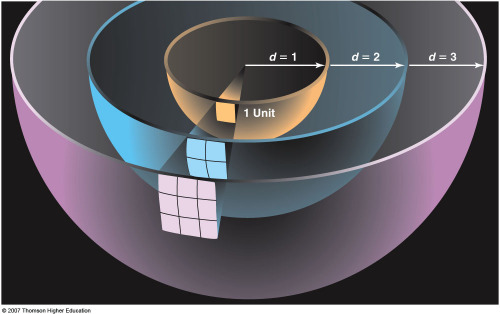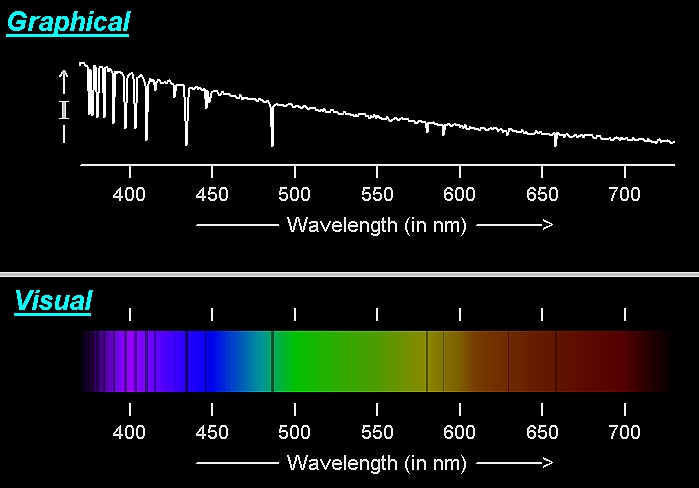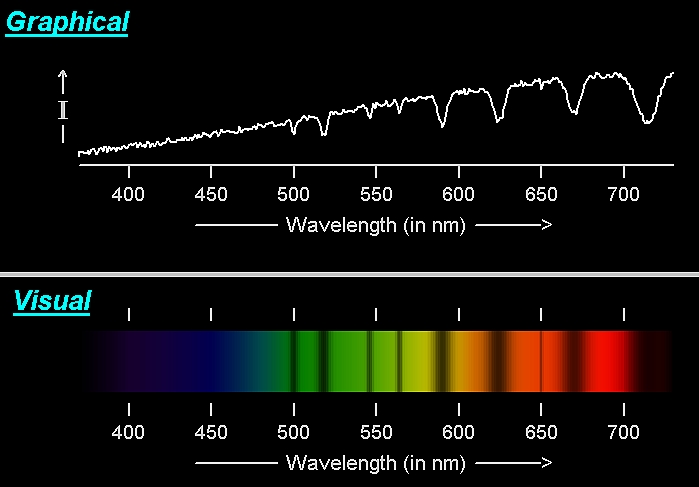Solar Luminosity
The Solar luminosity is, in principle, easy to find once the Astronomical
Unit (A.U.) is known. The Astronomical Unit is
the average of the closest distance and greatest distance the Earth
assumes as it orbits the Sun. To understand how this done, consider the
following.
Recall the inverse square law:
 |
- The brightness of the Sun falls off as 1/D2 and
so if we know the distance to the Sun we can infer its true brightness from
its measured brightness. Seems straightforward enough, are there other
problems?
- The distance to nearby stars can be found through annual
trigonometric parallax. Find the angle d. The angle d is tiny, in general.
The largest such angles for the closest stars are on the order of 1/3,600-th of
1 degree. This tiny angular
unit is known as an arcsecond. If
a star has a parallax angle
of 1 arcsecond, it is at a distance of
1 parsec = 3.08x1013km
= 3.26 light years from the Earth
|
 |
Yes, we need to know the total flux from the Sun or star
(which is referred to as the
bolometric flux):
Looking at the hot star on the left, we see that its (Rigel's) spectrum
peaks in the UV, outside of the visible band of the spectrum. We need to
get above the atmosphere to measure the bulk of its energy. The cool star
on the right (Antares) has a spectrum which peaks longward of the optical
portion of the spectrum. We need to somehow measure its spectrum out into the
IR.
The atmosphere of the Earth only
allows the visible and radio (plus some bands in other wavelength regions
to hit the Earth's surface) and so, in order to measure the bolometric
luminosity of the Sun one must send probes
above the Earth's atmosphere to measure the
Solar spectrum. Once this is done we can then
use our knowledge of the Astronomical Unit to infer that the
Solar luminosity is 3.84x1026 Watts.
This is the way in which other star's luminosities must also be
determined. The bolometric flux is always difficult to measure, but
the major
difficulty is finding accurate distances to stars.







